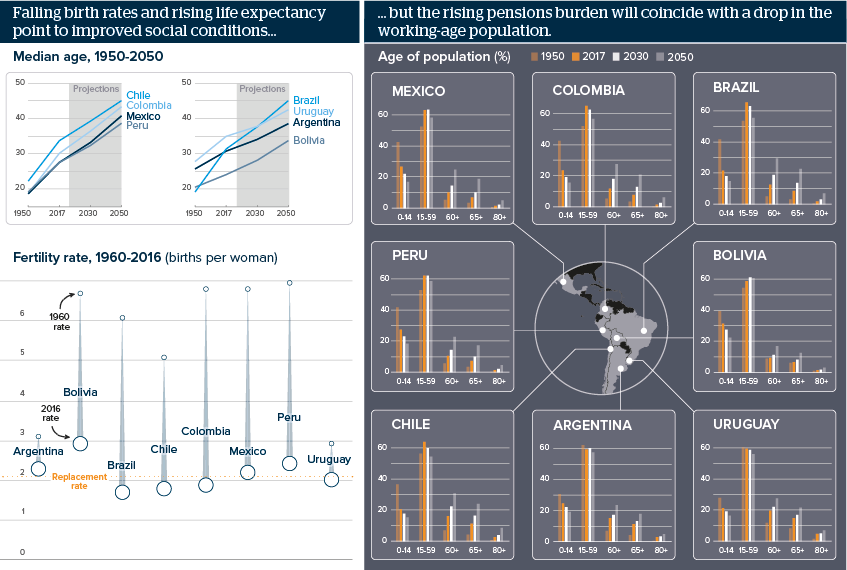Latin America’s demographic dividend declines
Latin America is another region that is getting old before it gets rich
Source: World Bank; UN World Population Prospects; FAO; WHO
Outlook
According to the IMF, life expectancy in Latin America’s five largest economies (Argentina, Brazil, Chile, Colombia and Mexico) rose from 58 in 1960 to 76 in 2014, while fertility fell from 5.6 births per woman to 2 in the same period.
According to the IMF, life expectancy in Latin America’s five largest economies (Argentina, Brazil, Chile, Colombia and Mexico) rose from 58 in 1960 to 76 in 2014, while fertility fell from 5.6 births per woman to 2 in the same period.
Moreover, while malnutrition has declined with birth rates, the overweight and obese account for over 60% in Argentina, Chile, Mexico and Uruguay; nearly 60% in Colombia and Peru; and over 50% in Bolivia and Brazil.
Impacts
- Undernourishment fell from 14.7% in 1990-92 to 5.5% in 2014-16, with chronic child malnutrition down from 24.5% to 11.3%.
- Health problems are increasingly shifting from food insecurity to ‘rich world’ issues such as obesity, diabetes and cardiovascular disease.
- Pension funds are inadequate to meet demand and pension reforms aimed at reducing deficits (as in Brazil) will be strongly resisted.
- Both public and private health spending will need to rise, and the focus will need to shift.
See also
- Ageing will drive social care demands in Latin America - Feb 26, 2024
- Slow population growth will pose challenges in Brazil - Jul 18, 2023
- Demographic-focused policies would raise global growth - Feb 8, 2023
- Immigration benefits may be squandered in Chile - Jul 8, 2019
- Chile pension reform will not tackle retirement age - Jun 14, 2019
- Urbanisation will rise as birth rate declines in Peru - Sep 12, 2018
- Private healthcare will expand in Latin America - Jun 22, 2018
- More graphic analysis
